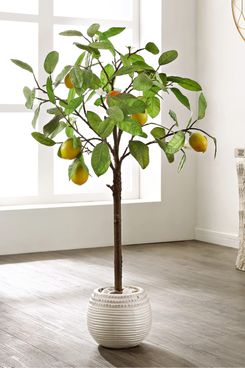By Master Gardener Volunteer Lesley Arrandale
[email protected]
As someone who tries to avoid watering her yard, I’ve been a bit anxious lately. Although the NOAA long range forecast predicted higher than usual rainfall in May, our position in relation to the St. Johns River seems to deflect rain clouds away from us. And it’s been hotter than average, which at least makes the NOAA forecast right in that regard.
Perhaps I need to plan a water-saving irrigation system. Since I don’t water very often, it would be more of an emergency measure, so I’ll weigh up the cost first; however, these systems are comparatively inexpensive, and the average gardener can devise them to suit their landscape fairly easily. For guidance, check out https://edis.ifas.ufl.edu/publication/AE524.
Despite the lack of rain, the front garden beds are still looking reasonably attractive – at least to my eyes. Indian blanket (Gaillardia sp.) plants are holding up well, and the cheerful red and yellow daisy-like flowers sing in the sun. There is fruit on the native Darrow’s blueberries (Vaccinium darrowii). The berries are turning dusty pink, which blends beautifully with the subtle blue green of the foliage. New shoots are delightfully pink tinged. The fruit is better suited to the birds as it’s not as luscious as our cultivated varieties, which is fine by me. I hope the birds enjoy them.
This year the dwarf Simpson’s stoppers (Myrcianthes fragrans) were full of flowers and their perfume filled the air. They were insect magnets. Now the flowers have faded, and many tiny fruits are beginning to develop. With adequate moisture, they will be bright red, half-inch round berries, usually with two seeds inside. I can’t wait to see the display. And doubtless the birds will appreciate them too.
Last year two dark pink wandflower plants attracted a host of pink aphids. I had hoped it wouldn’t happen again, but sadly the flower stems are full of them. This is a dilemma: to spray or not to spray. Last year the plants never really recovered from the onslaught, as I left the aphids for the predator insects to eat. This year I’ve half-heartedly tried to squish them, while hoping to avoid the lady beetle larvae which eat them voraciously. But although the larvae have made a meal of some of the aphids, they really haven’t eaten enough. I may just move the plants from the front yard to somewhere out of the way and let nature get on with its, in this case, rather uneven balancing act. Considering those pink gaura are cultivars of the native Gaura lindheimeri, I do wonder if that makes them more susceptible to insects and less resilient.
I’ve been concentrating on growing flowering plants from seed, and it takes time away from the vegetables. Instead of food crops, I’ll sow a cover crop, which will benefit the soil in those beds. It should flourish during the summer, and in time I’ll turn it into the soil as green “manure.” Check out this article to discover the benefits: https://edis.ifas.ufl.edu/publication/vh037.
Photo courtesy Lesley Arrandale
Gaillardia, or Indian blanket.





More Stories
60 Best Artificial Plants 2023
Gardening expert reveals the easiest plants to grow during a drought or dry season: ‘Needs no care’
Equip yourself for dry weather: Tools and techniques to soften the slap of drought in your garden